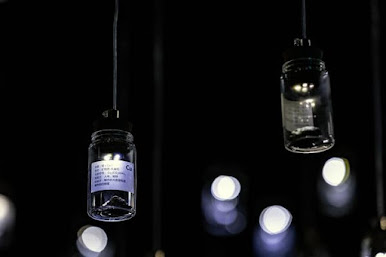Event 1 I Cosmological Elements #1
Last week, I attended Cosmological Elements #1 Zoom presentation on April 21st. The event covered numerous topics (brought up by various presenters) regarding the cosmos and explored the scientific and philosophical ideas surrounding the elements that make up the universe and connect all things.
"Primordial Galaxy." Innovation News Network, 20 Nov. 2020.
In the panel/presentation, an interesting notion stood out to me: recognizing the importance of art in representing ideas and views of the cosmos. Furthermore, what I found even more interesting was that the concept of the "Third Culture" arose in the explanation of how cosmological elements have always played a significant role in artistic expression, combining science and art to understand the universe. As we learned in Week 1's lecture videos, "two cultures" was a term coined by. C.P Snow, "...an English author and physicist" who "...identified two cultures: the literary intellectuals and the natural sciences" (Vesna "Two Cultures" Part 2). The professor then explains how there is a separation between both fields and a lack of communication between them due to a lack of understanding. C.P. Snow's article "The Two Cultures and the Scientific Revolution" confers this, explaining that the education system is responsible for the fact that most people in the humanities have little understanding of science. The author notes that in many schools, science education ends at an early age, and students who go on to specialize in humanities subjects are not required to study science at a high level. In "Toward a Third Culture: Being in Between," Professor Vesna suggests that a third culture is needed to bridge the gap between the sciences and the humanities (Vesna). One that combines both art and science. My favorite piece that relayed this message from the event was Daniela Brill Estrada's piece titled "Our Celstial Bodies".

Image of the same piece taken during the event
Another presentation that I found very interesting was Professor Vesna's "[Alien] Star Dust" project. It focused on the significance of dust, which is complex and important in the universe. The project's use of sound, installation, and online meditation reflects how we are connected to each other and our planet, helping us recognize our place in the larger sense. All in all, both works show how space and the Earth are interconnected and the importance of understanding this connection.
Overall, Cosmological Elements #1 was an enlightening event that helped me understand how humans can connect with the universe! I loved all of the wonderful artworks and am excited about what I will learn in the second part of the Cosmological Elements series.
Proof of Attendance:
Sources:
Text:
Snow, C. P. "The Two Cultures and the Scientific Revolution". New York: Cambridge UP, 1959. Print.
Vesna, Victoria. "Toward a Third Culture: Being In Between." Leonardo. 34 (2001): 121-125. Print.
Vesna, Victoria. "Two Cultures Part 2". https://bruinlearn.ucla.edu/courses/160989/pages/week-1-lectures?module_item_id=5946318
Images:
"Primordial Galaxy." Innovation News Network, 20 Nov. 2020. https://www.innovationnewsnetwork.com/primordial-galaxy/9398/
Estrada, Daniela Brill. "Our Celstial Bodies." Cosmo's Elements. https://cosmoselements.art/Artists.
(other 2 images were taken as a screenshot from the event)








Comments
Post a Comment